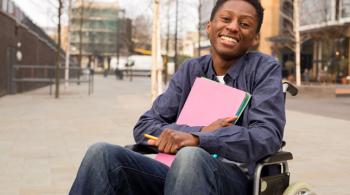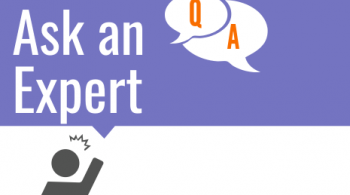By Carrie Schiel, M.S., CCC-SLP
April 24, 2016
Carrie Schiel is a former Center for Innovation and Learning in Special Education (CILSE) fellow and a school-based speech-language pathologist with over ten years’ professional experience. Currently, she specializes in the evaluation of pre-school aged children as part of the Developmental Evaluation Services for Children (DESC) Team for Montgomery County Public Schools.
Each student diagnosed with autism spectrum disorder has his or her own unique strengths and challenges. While this individuality should be celebrated and nurtured, it is often the very thing that leaves both professionals and parents at a loss for how to best facilitate development of skills, including those in the area of communication. As a speech-language pathologist (SLP) with over 10 years’ experience in the public schools, I have found the following tips to be very helpful when working with all students with ASD, no matter their skill level:
-
Direct eye contact isn’t necessary for good communication.
One of the most common skill areas SLPs are asked to target is eye contact. To the majority of people, eye contact signals that one is respectfully paying attention to their communication partner. Although it is very important during the assessment phase to document whether or not a student makes eye contact, it is becoming increasingly known that direct eye contact is extremely difficult for many individuals with ASD and actually diminishes their ability to focus on the content of the conversation
Expert Tip: Direct eye contact isn’t necessary for good communication! Instead, encourage and support students to use “approximated eye contact” (e.g., looking at someone’s nose or forehead), appropriate body language (e.g., standing at an appropriate distance, turned toward communication partner), and facial expressions that correspond to their emotions during conversations. - Being explicit may feel awkward or unnecessary, but it is extremely helpful.
Sometimes, the most beneficial information you can give students with ASD about their communication skills may seem super obvious or be somewhat sensitive in nature.
Expert Tip: Don’t shy away from having straightforward conversations in a supportive way. For example, I once worked with a student who consistently interrupted people, monopolized the topics of discussion, as well as dismissed the opinions of others if he didn’t agree. After a while, people stopped interacting with him and he couldn’t figure out why. One day, he and I had a direct conversation about how the other students perceived him when he acted that way. Although I ran the risk of offending him with the truth, it turns out he was completely unaware of how people felt. In the end, he thanked me for telling him the things other people were only willing to say behind his back.
- Respect and acknowledge students’ individual styles and preferences.
I have frequently heard the following at IEP meetings: “She doesn’t participate in class,” or “She only has a few close friends,” or “He is only interested in trains.” While communication difficulties and restricted interests are important to identify and discuss, they are not always cause for concern and/or panic.
Expert Tip: While broadly targeting and increasing communication skills, be sure to remember it is completely “normal” for each student’s preferences to differ. Before jumping to “fix” something, I find it helpful to ask myself, “Is the fact that this person is introverted only a concern because they have a diagnosis of ASD?” Or, “Is she quiet in this class because she’s not interested in history?” Most times, striking a balance between respecting students’ interests and preferences, while pushing them out of their comfort zone works best. And remember, even though you may be tired of hearing about trains for the millionth time, it’s important to respect how meaningful they are to the student.
- Partner training is just as important as training students with ASD.
One of my favorite sayings is “When you know better, you do better.” And, my favorite thing about educators and parents of students with disabilities is that the majority fully embrace this way of thinking.
Expert Tip: Always be open to collaborating with and learning from all team members - including the students themselves. As students get older, they can often tell you what is most helpful to them (e.g., being prepped ahead of time to answer a question vs. being called on spontaneously). Make sure to check in frequently as situations and people are always changing.
In the end, as you well know, there are no hard and fast rules when working with individuals with ASD. Getting to know each student teaches us the most about the intricacies of this disorder and how best to help them. And, although the consistent task of “trying again tomorrow” can be time-consuming and draining at times, we can all agree that seeing even the slightest amount of progress in our students is well worth our daily time and effort.
Thank you for all that you do, including taking the time to read this article. To me, Autism Awareness Month is not only an opportunity to educate the public about a very complex and ever-changing disorder, but also (and more importantly) an opportunity to shine a light on the amazing professionals such as yourself who work equally as hard year-round in the hopes of creating the best future for your students as possible.















